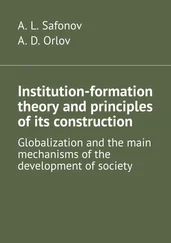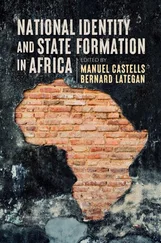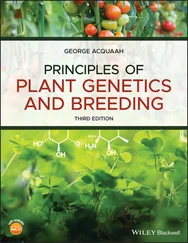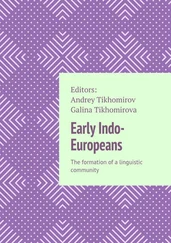Planet Formation and Panspermia
Здесь есть возможность читать онлайн «Planet Formation and Panspermia» — ознакомительный отрывок электронной книги совершенно бесплатно, а после прочтения отрывка купить полную версию. В некоторых случаях можно слушать аудио, скачать через торрент в формате fb2 и присутствует краткое содержание. Жанр: unrecognised, на английском языке. Описание произведения, (предисловие) а так же отзывы посетителей доступны на портале библиотеки ЛибКат.
- Название:Planet Formation and Panspermia
- Автор:
- Жанр:
- Год:неизвестен
- ISBN:нет данных
- Рейтинг книги:3 / 5. Голосов: 1
-
Избранное:Добавить в избранное
- Отзывы:
-
Ваша оценка:
- 60
- 1
- 2
- 3
- 4
- 5
Planet Formation and Panspermia: краткое содержание, описание и аннотация
Предлагаем к чтению аннотацию, описание, краткое содержание или предисловие (зависит от того, что написал сам автор книги «Planet Formation and Panspermia»). Если вы не нашли необходимую информацию о книге — напишите в комментариях, мы постараемся отыскать её.
Audience
Planet Formation and Panspermia — читать онлайн ознакомительный отрывок
Ниже представлен текст книги, разбитый по страницам. Система сохранения места последней прочитанной страницы, позволяет с удобством читать онлайн бесплатно книгу «Planet Formation and Panspermia», без необходимости каждый раз заново искать на чём Вы остановились. Поставьте закладку, и сможете в любой момент перейти на страницу, на которой закончили чтение.
Интервал:
Закладка:
Of course, we need to keep in mind the point emphasized by Freeman Dyson (e.g., [3.24, 3.25]) that not all potential habitats are Earth-like planets; however, formation rates of other potential habitats generally follow the same pattern, which follows from the general chemodynamical evolution of the Milky Way. This was valid for the Galactic past , on which our evidence is based. Therefore, we are justified in using Earth-like planets as synonymous with habitats for origination and evolution of life and intelligence so far . Why is the temporal qualification important here? This is the key point here: because directed panspermia, in contrast to other processes leading to the expansion of life, is not bound by a narrow class of Earth-like planetary habitats .
It is obvious why this is so. The design space of advanced technological evolution (or what has been dubbed postbiological evolution) is many orders of magnitude larger than the design space of natural, biological evolution; for instance, even a primitive technological civilization such as this on Earth has already created more diverse ways of locomotion or perception than the animal evolution has managed to do since the Cambrian Explosion. Again, barring an existential disaster, all researchers in the futures studies agree that the transformative technologies of the near future, such as nanotechnology and AI will immensely expand the reach of (post)human design [3.11]. There is no reason to doubt, in accordance with the principles of exploratory engineering ([3.5, 3.22, 3.63], esp. Figure 3.1in [3.5]), that what applies to the future of humanity will apply to other Galactic civilizations as well, notably the older and more advanced societies [3.19, 3.20]. After all, we share the same laws of physics and therefore the realm of the possible, although huge, is limited by the same constraints of physics (and, presumably, economics in a generalized sense; cf. [3.60]). Therefore, advanced societies are likely to be capable of creating life forms capable of surviving in other habitats, similar to the “Dyson tree”: a hypothetical plant (perhaps resembling a tree) capable of growing on the surface or inside a cometary nucleus (e.g., [3.25, 3.62]). Gradually, such organisms could be able to create the critical amount of complex organics to establish the basis for subsequent human colonization of objects such as those in the Kuiper Belt, which contain huge amounts of volatiles such as water, methane, or ammonia. Even more resistant organisms could be engineered to survive and thrive in the atmospheres of gaseous giants, along the classical suggestions of Sagan and Salpeter [3.55]. Of course, that visionary study suggested searching for naturally evolved ecologies in atmospheres of Jupiter and other gas giants. If such ecologies are physically possible, there is no reason to doubt that, even if they did not evolve naturally due to contingency and opportunism of evolution, they could still be engineered by sufficiently advanced civilizations.
Such nonstandard habitats—like cometary nuclei and gas giants’ atmospheres—are immensely larger than surfaces of Earth-like planets by any meaningful metric (e.g., number density per unit Galactic volume or the amount of available resources). Therefore, if some life forms could enter those niches, they are likely to dominate the overall cosmic tally of life forms—in the fullness of time, even if not up to now. 11 In other words, a randomly chosen living being in our universe is mostly likely to have directed panspermia in its phylogenetic past. Taking into account both the decreasing rate of the terrestrial planet formation with cosmic time, the perspective of those nonstandard habitats for engineered, if not naturally emerging biospheres, and the ideas of visionaries and optimists like Constantine Tsiolkovsky or Gerard O’Neill about entirely artificial habitats [3.4, 3.58]—all those point in the direction of a radically different astrobiological landscape than is conventionally assumed. As in many other stages of history of science and philosophy, it is the lack of imagination which is by far the bigger problem than its excess.
3.4 Conclusion and Prospects
We have discussed a speculative account of the extended continuity thesis and its consequences in the fullness of space and time. Overcoming chronocentrism is difficult but offers several promising directions for further research and for methodological grounding of astrobiology. (This comes in addition to other, and arguably more important roles, the rejection of chronocentrism plays in the domain of environmental ethics, space ethics, or political philosophy.) In affirming the extended continuity thesis as a usable heuristic, we have to avoid pitfalls to which chronocentrism invariably leads in our dynamic, evolutionary universe which is always in change and flux.
The extremely speculative discussion above seems to suggest that directed panspermia becomes more and more important with the passage of cosmic time. Eventually—rather soon on cosmological and evolutionary scales—it will become the main channel of transitioning from non-life to life. This will be true entirely independently of whether directed panspermia ever occurred in our past. Since the habitable future of the universe is so much larger than its past, this means that from a four-dimensional, spatiotemporal point of view, directed panspermia is the main source of life. (“Is” here pertains to the timeless existence, not to the conventional present tense, since human languages have not evolved to enable adequate discussion of the four-dimensional view and other deep metaphysical issues.) Larger here means not only in terms of accessible volume but also in terms of the available design space. Even if past biospheres were limited to Earthlike planets only, future biospheres will not be. Instead, we have strong rationale to expect huge and probably inconceivable diversity of possible habitats. Hence, contrary to our intuitions, it might be the case that advanced life is also, in the fullness of time, a precondition for simple life. 12
A common misperception about general theses like the continuity thesis—or indeed Copernicanism or the anthropic principle(s)—is that they contain or imply teleological elements. A superficial reflection is sufficient to establish that it is not the case. If anything, the continuity thesis implies a strongly disteleological view of the major evolutionary transitions: there is no mystical force leading to “jumps” over the low-probability gaps, since in reality, there are no such gaps. However, we shall always keep in mind that it is a useful heuristic and not some mandatory “law”: if it turns out that life and intelligence are very rare in the universe for some reason, we shall have empirical reasons to doubt the validity of the continuity thesis. Clearly, as with any other useful philosophical principle in science, this is an additional motivation, rather than an impediment, for further search and study.
One consequence of the ideas outlined in this chapter is that their future development will likely lead to gradual dissolution of the very concept of habitability, which has emerged as the central concept of astrobiology in the course of the last (roughly) 20 years. If advanced biotechnology enables planting Dyson trees on Kuiper Belt objects by future humans, or if some postbiological civilization successfully seeds atmospheres of gas giants with life, these instances of directed panspermia will obviate the constrains inherent in the very notion of habitability. The situation is further complicated by the reasonable expectation that, if seeding occurred in the sufficiently distant past, it may be very hard or impossible to verify for rather unsophisticated observers such as the present-day or near-future human astrobiologists. (Notice the interesting asymmetry: engaging in directed panspermia in practice seems to be easier than actually verifying whether a biosphere is the product of such intentional activity or an entirely naturalistic evolution in situ . We could launch “soda cans with microbes” toward other planets effectively tomorrow, while to find and prove local origin of another planetary biosphere seems to be a task for another century if not millennium. Whether this asymmetry is a reason to worry about ethical and legal aspects of directed panspermia is an interesting challenge outside of the scope of the present chapter.)
Читать дальшеИнтервал:
Закладка:
Похожие книги на «Planet Formation and Panspermia»
Представляем Вашему вниманию похожие книги на «Planet Formation and Panspermia» списком для выбора. Мы отобрали схожую по названию и смыслу литературу в надежде предоставить читателям больше вариантов отыскать новые, интересные, ещё непрочитанные произведения.
Обсуждение, отзывы о книге «Planet Formation and Panspermia» и просто собственные мнения читателей. Оставьте ваши комментарии, напишите, что Вы думаете о произведении, его смысле или главных героях. Укажите что конкретно понравилось, а что нет, и почему Вы так считаете.












